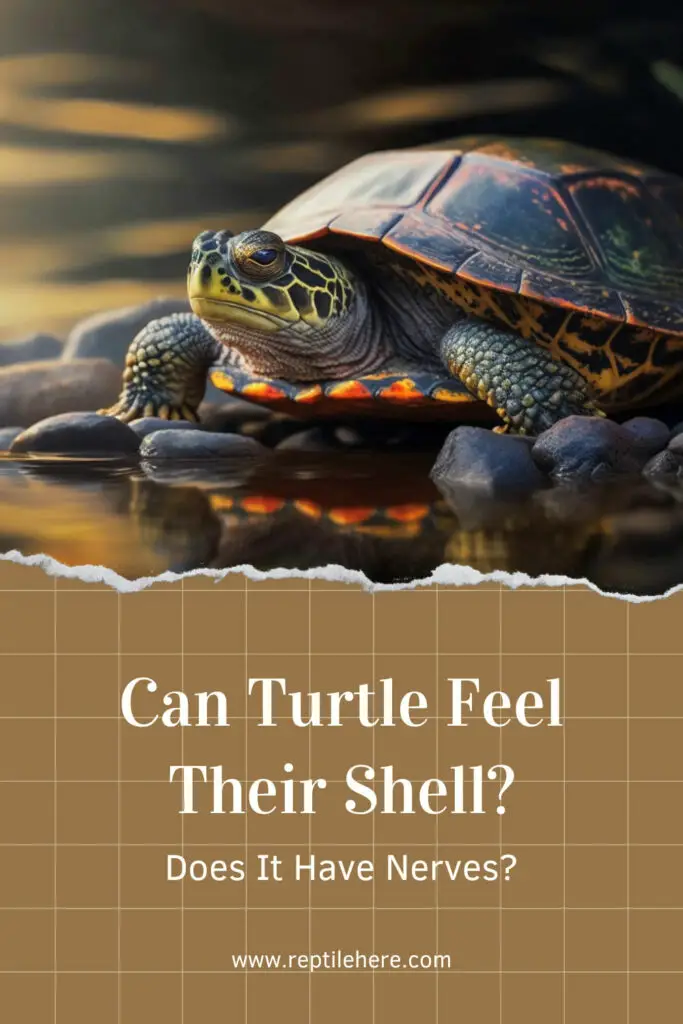Can Turtle Feel Their Shell? Does It Have Nerves?
Turtles have to carry their beautiful shell on their backs at all times. A common thought that pops up in our heads is whether the turtles can feel their shell on their back or not.
So, can turtle feel their shell? Does it have nerves? The interesting answer is yes. Turtles can feel the shells on their backs. And there are several blood vessels and nerve endings in the shells.
In this guide, we will discuss the details of turtle shell sensations. On top of that, we will share a few key pieces of information on the topic. So, read the guide till the end!
Can Turtle Feel Their Shell? Does It Have Nerves?
Contents
We all are aware of the hard shell that the turtle carries on its back. A common confusion among people is whether the turtles can feel their shells when you touch them. Well, as mentioned above, the answer is yes.

Turtles can feel their shell when you touch them or apply any amount of pressure on the back. When you touch or stroke the shell of a turtle, they typically feel a slight vibration on its back. And this happens because there are several nerve endings on the outer cover.
Furthermore, there are several nerve endings on the turtle’s back, which are located beneath the shell. These nerve endings are frequently extremely sensitive, allowing turtles to detect stroking and emotions on their backs. In addition to strokes, turtles may feel pain and discomfort on their hard shells.
Therefore, a large amount of pressure or impact on the turtle’s back’s outer cover will induce discomfort. Humans experience excruciating agony when they break a bone. When there are fractures or damage to the shell, turtles experience terrible discomfort.
However, the quantity of feeling felt by each turtle varies greatly. This is determined by the type of turtle anatomy or construction of its shell.
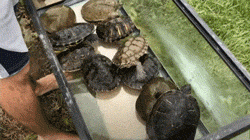
For instance, sea turtles have stronger shells on their backs than typical land turtles. Even though their shells are tougher, sea turtles are more sensitive to touch.
What Are Turtle Shells Made Up Of?
The turtle skeleton is distinct in that it comprises a shell, which is essentially an extension of the turtle’s spine and ribs. As we know, as per turtle anatomy, their shells are hard and help them to protect themselves from danger.

This strong and hard outer cover consists of 60 small bones that make up the shell. And these bones are covered with an exterior shield known as scutes.
If you look closely at the shell of the turtle, you will notice that there are visible squares. These squares are scutes and are typically made up of keratin. Keratin is the same material that makes up human hair and fingernails.
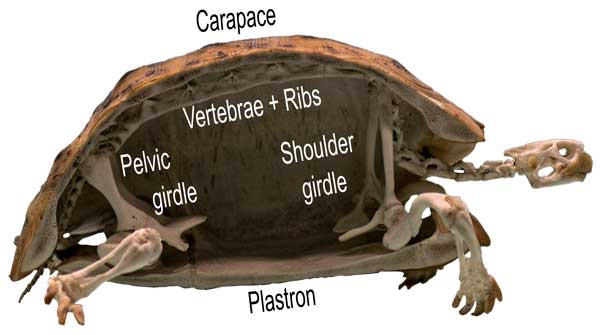
Can Box Turtles Feel When You Touch Their Shell?
Box turtles, like other turtles, can feel when their shells are touched. The box turtle’s shell has many nerve endings. And the nerves on their back are linked to the nervous system.
In the turtle skeleton, the nerve endings in the outer shells give messages to them when you scratch or contact it. And these signals enable the animals to quickly detect scrapes or touches. Not only that but box turtles can senses pain if their shell is damaged in any way.
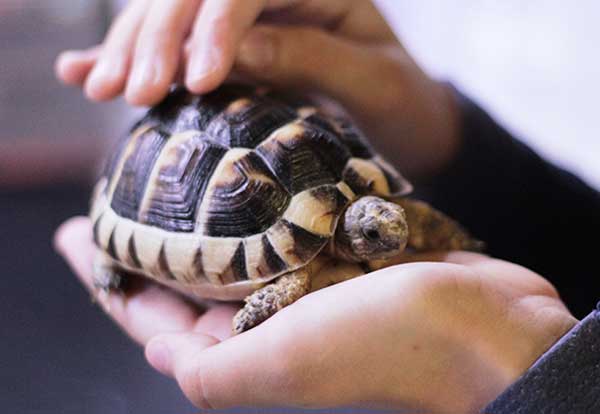
Make sure that you do not put too much pressure on their exterior cover, as it can cause the shell to break or crack. And this will take a significant amount of time to heal and cause your reptile to struggle.
Can Turtles Feel Barnacles?
Barnacles are arthropods that are related to crabs and lobsters that dwell in tidal or shallow water. These arthropods cling to sea turtle shells and remain on the surface. Turtles can quickly detect barnacles clinging to the surface.
The shell’s nerve endings allow them to detect the presence of the arthropod. While some barnacles may not do any harm, others will burrow through the surface. When this happens, the turtles become more susceptible to infections and other health issues.
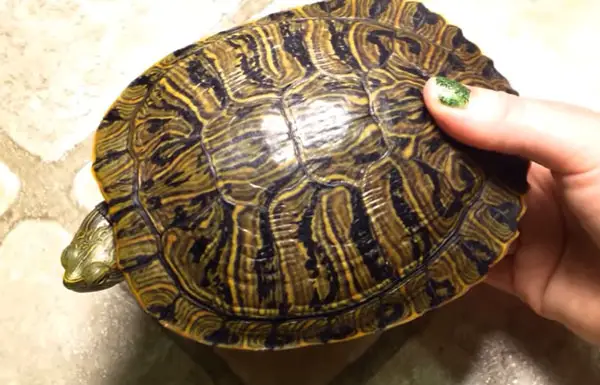
In such circumstances, damage to the shell will necessitate medical attention owing to the discomfort. When turtle shell removed, they become highly vulnerable.
Can Snapping Turtles Feel Their Shell?
Yes, snapping turtles can feel their shell. Like all other breeds and categories of turtles, snapping turtles also have nerves on their shells. And similar to all other turtles and tortoises, the shells are very sensitive.

Snapping turtles can not only feel when you touch them, but they can also feel pain through their exterior cover. Make sure that you deal with the turtles without putting too much pressure on their keratin shields.
Do Turtles Like Their Shells Are Scratched?
There is no definitive answer to whether turtles enjoy getting their shells scratched. However, similar to humans and other animals or reptiles, not all turtles will like the senses of having their shells scratched.
Many turtles, on the other hand, like having their shells scraped. Most turtles like to be stroked, and some will approach humans to have their shells rubbed. Scratching the shell might help them relax and feel safer.
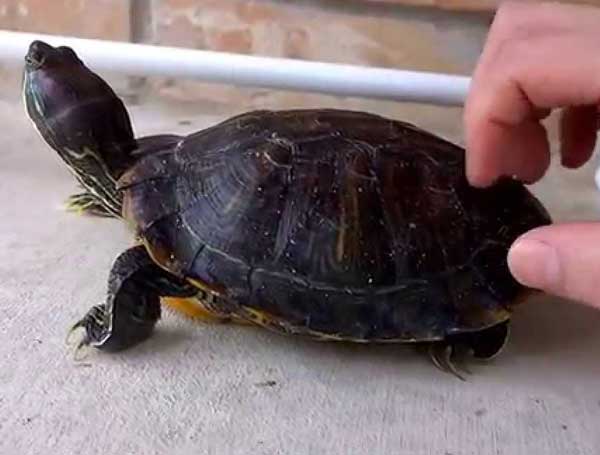
A few baby turtles may lengthen their necks to show affection and curiosity. But remember to be careful with the turtle when scratching its shell. This is because it might harm the turtle’s shell and irritate it. Moreover, painted turtles do not like it when you touch them at all.
Signs Of Damage On Turtle Shells
There are quite a few signs that alert people when the shell of the turtle is damaged. Pay attention to these signs, and make sure that the reptile receives proper treatment and care. Let us take a look at the signs of an unhealthy turtle shell.

- Openings or holes in the shell
- Cracks, chips, and dents on the keratin shield
- Discoloration or changes in the texture of the shell
- Shell deformities or soft spots
- Chalky white residue on the outer surface
- Unnatural gaps between the cover plates
- Missing scutes on the back of the turtle
FAQs
Turtles are mighty creatures, and we all are curious about them. Read some of the top frequently asked questions to know more details about the topic.
Turtle shells are very strong. They are made of keratin, a protein that is also found in fingernails and hair, and they can protect the turtle from many predators. In some cases, these shells can even deflect bullets.
A turtle without shell would be vulnerable to predators and other threats, as the shell provides protection for the turtle’s body. The shell also plays an important role in the turtle’s overall anatomy and movement, so a turtle without a shell would likely have difficulty moving around and surviving in the wild.
No, turtle shells do not mend by themselves. If a turtle’s shell is injured, it must be transported to a veterinarian. To aid healing, the wound will be treated with a specific paste and bandaged. The process, however, is lengthy and exceedingly painful for the reptile.
Summing Up
The mysterious shells provide turtles with protection from predators and help them prevent damage. So, can turtle feel their shell? Does it have nerves? Yes, they do feel their shell, and it also has nerves connecting to their spine and can even respond when you touch it.
They are very vulnerable without their shell. Thus, make sure that you take proper care of the reptile under all circumstances. And ensure that the turtles do not receive any pressure or damage to the shells to prevent pain and discomfort.
